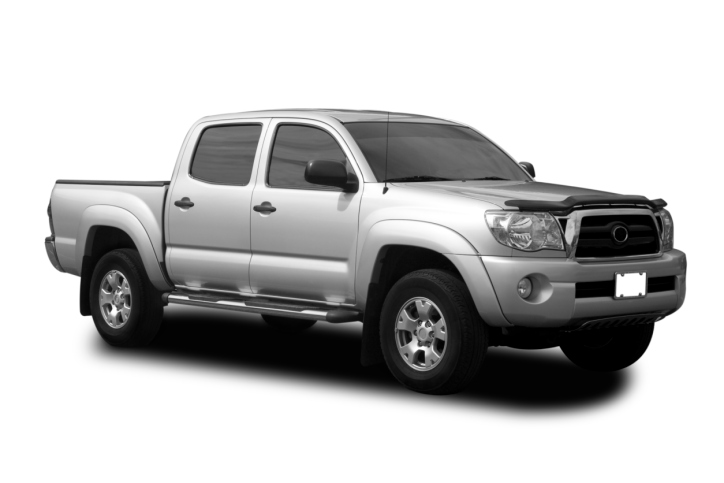
Automotive Prototyping for Pickup Truck Lightweighting
Today’s pickup truck manufacturers are caught between a rock and a hard place when it comes to lightweighting. They need to increase fuel efficiency while retaining the power and performance consumers have come to expect from their trusted automotive brands.
Moreover, this challenge is not unique to truck OEMs and suppliers. In fact, many current automotive prototyping discussions center around this very issue, whether a manufacturer is developing a pickup, a sedan, or an electric vehicle.
One way to address this fundamental challenge is to decrease vehicle weight. This can be accomplished in a number of different ways but most often involves developing parts made with different, lightweight materials. For example, using chrome-plated plastic instead of metal for interior parts. Or, more daringly, substituting aluminum for steel when it comes to manufacturing exterior and structural components.
Pickup truck components that can be lightweighted in this way to produce significant weight reduction include:
- Fenders
- Hoods
- Doors
- Frames
- Equipment Housings
- Bumpers
- Suspensions
Truck Axle Lightweighting Possibilities
Lightweighting is relatively easy when it comes to decorative components and even structural components such as A-pillars and B-pillars. But what is a truck maker supposed to do when this drive toward automotive lightweighting affects suspension design — one of the main components that inform a pickup truck’s ability to carry, pull, and transport heavy loads?
The answer isn’t so straightforward. While many axles could definitely stand some lightening, axles come in various shapes and sizes, can have dozens of components, and must undergo rigorous testing before they are put into production.
One prime area for lightweighting consideration, though, is the classic Salisbury axle, which incorporates heavy cast components. This, of course, is what has made them a strong and durable staple of pickup truck design. But the reliance on casting doesn’t really leave much room for lightweighting.
A banjo axle design, though, can be as strong as a Salisbury axle and, at first glance, does exhibit some features that could offer more clear paths to lightweighting. Most significantly, a banjo axle housing is made of stamped, high-strength components that are welded together. By using the right lightweight steel alloys, a banjo axle design could greatly reduce the part’s mass and contribute significantly to a reduction in overall vehicle weight.
A Real Truck Axle Prototyping Project
Recently, 3-Dimensional embarked on a project where we partnered with an automaker to lightweight banjo axle components for its two-wheel- and four-wheel-drive pickup trucks. The engineers and product manager we worked with were under the gun to develop a viable solution that would deliver:
- Driving performance
- Reliability
- Weight savings
- Fuel economy
And they didn’t have a lot of time to comply with this directive. They had a mandate to progress from initial design to validation in just 10 weeks so as not to interrupt existing production cycles. At the end of the period, they needed 55 axle housing units to test
To start, they provided us with CAD files for the part designs, which included 28 stamped parts — many of them structural components that needed to be fabricated using high-strength steel.
We immediately began constructing the stamping dies for the dozens of parts involved in this axle assembly, including:
- Axle halves
- Baffles
- Front and rear backing plates
- Rear cover
- Front mounting ring
- Strengthening gussets
- Brake cable guides and hose brackets
- Harness brackets
- Spring seats and reinforcements
- Shock brackets
- Drain plug insert
- Pipe brackets
Speeding Up the Automotive Prototyping Process
The first thing we did to speed up the prototyping process was to build dies using Kirksite and aluminum alloys. We selected metals that would both expedite the die-making process and allow us to build tooling that would last long enough to complete several functional iterations so that we could deliver the final 55 axle housing the client would need for testing.
Because we were working so quickly, we anticipated that some of the stamped components would need slight adjustments in order to meet the tight specifications. We therefore set up our five-axis laser process system so that it would be ready to trim parts as needed — in particular, we knew the upper and lower halves of the housing would require this attention.
With the part stamping and laser trimming completed, the next challenge was the fixturing. During the assembly process, weld fixtures needed to secure and accurately locate the 28 different pieces in the final assembly.
Critically, the wheel flange required a single, continuous weld. Moreover, executing this weld during the prototyping process would verify production intent. Not only were we able to do so, but we took it one step further by developing a solution to minimize tooling and equipment costs in the process. Two robotic arms were programmed to work in unison — one to hold and rotate the part and the other to weld.
During this truck axle prototyping project, five in-house certified inspectors were on hand to verify the welds and correlate their observations with all the process data we recorded so we could deliver a report that the automaker could use to inform their production runs.
Making Pickup Truck Lightweighting a Reality
While it was a challenging project, we’re proud to say that we delivered the 55 prototype banjo axle assemblies on time, within the 10 weeks stipulated. And we’re even more proud that there are thousands of trucks on the road that feature this innovative banjo axle design today. They’re out there, saving their drivers money on gas without sacrificing an ounce of performance or reliability.
To learn more about this particular pickup truck banjo axle prototyping project, please download our case study.
